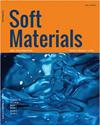基于单宁酸离子配位包封的安全高效DNA递送
IF 1.4
4区 材料科学
Q4 MATERIALS SCIENCE, MULTIDISCIPLINARY
引用次数: 1
摘要
聚乙烯亚胺(PEI)是一种非病毒基因载体,由于其转染效率高而备受关注。然而,其临床应用受到高正电荷密度引起的细胞毒性的限制。因此,通过适当的策略降低毒性并保持高转染效率对促进PEI作为基因载体的发展具有重要意义。为了降低PEI的毒性,本工作研究了利用单宁酸(TA)与金属离子(Mn+)的配位包封PEI/DNA复合物的可行性。首先,TA通过静电作用在PEI/DNA复合物表面形成涂层,然后通过金属离子与TA的配位制备了四元复合物(Mn+(TA/PEI/DNA))体系。为了更好地构建一个转染效率高、毒性低的基因递送系统,研究了PEI分子量、PEI/DNA质量比、TA质量比和金属离子类型对四元复合物转染效率、细胞毒性、粒径、ζ电位和细胞摄取途径的影响。结果表明,基于PEI70k并由TA和钾离子配位包封的四元复合物在保持高转染效率的同时,显示出比PEI70k/DNA更好的安全性。这表明,通过TA和离子的配位包封策略来提高PEI作为基因载体的安全性是可行的,这为基于PEI的基因递送系统的设计提供了新的参考。本文章由计算机程序翻译,如有差异,请以英文原文为准。
Safe and efficient DNA delivery based on tannic acid-ion coordination encapsulation
ABSTRACT Polyethyleneimine (PEI) is a non-viral gene vector of frequent concern because of its high transfection efficiency. However, its clinical application is limited by the cytotoxicity caused by high positive charge density. Therefore, reducing toxicity and maintaining high transfection efficiency through appropriate strategies are of great significance to promote the development of PEI as gene vector. In order to reduce the toxicity of PEI, this work studied the feasibility of encapsulating PEI/DNA complexes by using the coordination between tannic acid (TA) and metal ions (Mn+). Firstly, TA formed a coating layer on the surface of PEI/DNA complex through electrostatic action, and then the quaternary complex (Mn+(TA/PEI/DNA)) system was prepared by the coordination between metal ions and TA. In order to better construct a gene delivery system with high transfection efficiency and low toxicity, the effects of PEI molecular weight, mass ratio of PEI/DNA, mass ratio of TA, and types of metal ions on the transfection efficiency, cytotoxicity, particle size, zeta potential, and cell uptake pathway of the quaternary complex were studied. The results showed that the quaternary complex based on PEI70k and encapsulated by coordination between TA and potassium ions showed better safety than PEI70k/DNA while maintaining high transfection efficiency. This showed that the strategy of coordination encapsulation of TA and ions to improve the safety of PEI as gene carrier is feasible, which provides a new reference for the design of gene delivery system based on PEI.
求助全文
通过发布文献求助,成功后即可免费获取论文全文。
去求助
来源期刊

Soft Materials
工程技术-材料科学:综合
CiteScore
2.90
自引率
0.00%
发文量
21
审稿时长
2.2 months
期刊介绍:
Providing a common forum for all soft matter scientists, Soft Materials covers theory, simulation, and experimental research in this rapidly expanding and interdisciplinary field. As soft materials are often at the heart of modern technologies, soft matter science has implications and applications in many areas ranging from biology to engineering.
Unlike many journals which focus primarily on individual classes of materials or particular applications, Soft Materials draw on all physical, chemical, materials science, and biological aspects of soft matter. Featured topics include polymers, biomacromolecules, colloids, membranes, Langmuir-Blodgett films, liquid crystals, granular matter, soft interfaces, complex fluids, surfactants, gels, nanomaterials, self-organization, supramolecular science, molecular recognition, soft glasses, amphiphiles, foams, and active matter.
Truly international in scope, Soft Materials contains original research, invited reviews, in-depth technical tutorials, and book reviews.
 求助内容:
求助内容: 应助结果提醒方式:
应助结果提醒方式:


